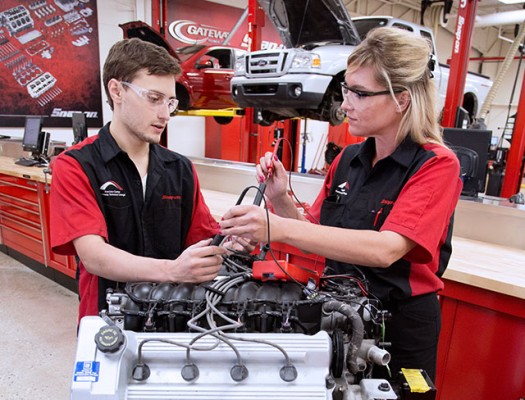
You may be curious as to what features cars offer and how they make driving safer and more enjoyable. The car's automatic emergency braking system (AEBs), can be a useful feature. It will stop the car or dramatically slow it down when it detects a collision. These systems can help avoid accidents. While they are not mandatory at the moment, they will soon be a standard feature in all new cars. What are the best features of cars?
Air conditioning
In the 1940s, the Packard made air-conditioning available for the first time. This feature would not become a standard in automobiles for another ten years. Factory air conditioning was first introduced in the Chrysler Imperial, a 1953 model. It was overseen by Chrysler founder Walter Chrysler and offered improvements over earlier models. These changes marked an evolution in automotive air-conditioning technology. The Nash Integrated System was also introduced in the Nash Ambassador in 1954. This system was the first to incorporate heating and cooling and could be controlled with switches on its dash.

Steering wheel adjustment function
The steering wheel can be adjusted to provide more or lesser control. Its adjustment may vary depending on the make and model of the vehicle. However, in general, the hands should be placed on opposite sides of the steering wheels. You should hold the steering wheel with your palms, but not with your fingers. The steering wheel adjusts itself as you change its position. You can also adjust the steering wheel to the desired position using the buttons.
360-degree surround-view camera system
The technology behind the 360 degree surround-view camera system in car uses 4 wide-angle cameras to capture images from different angles. The camera's computer software then stitches together these pictures to produce a three-dimensional image of the environment. The result is displayed on a split screen that includes the driver's view, front and rear. The system can also provide audio warnings to the driver and feedback systems to assist them in avoiding kerbs and obstacles.
Auto-dimming lenses
The Auto-Dimming Mirrors are a new option for those who have experienced glare in their rear-view mirrors. These revolutionary devices dim when they detect the glare and dimming as the glare gets brighter. Gentex K2 and other auto-dimming rearview mirrors are examples of this. These innovative products can even reduce glare from headlights.

Front lighting system adaptable
Autonomous front lighting systems can adjust the speed and angle of the headlights automatically as the vehicle moves from one lane to the other. The lights have a multitude of LEDs which provide adequate lighting for the oncoming traffic. The adaptive front lighting allows drivers to see ahead obstacles without being blinded from the bright headlights. Toyota vehicles include adaptive front lighting.
FAQ
What qualifications are necessary to become a mechanic
A series of exams is necessary to become a mechanic. These include:
-
A general knowledge test
-
A practical exam
-
An apprenticeship test
These tests are intended to make sure you have a solid understanding of the basics of mechanics before you can start your career as a mechanic.
Once you've passed these tests, you'll be eligible to work as a mechanic. You'll still need an apprenticeship. This will involve training in the trade.
You'll need to attend classes and workshops to learn everything you need to know about repairing vehicles. Working alongside skilled mechanics is also a must.
A mechanic must be highly focused and attentive to detail in order to succeed. Vehicle repairs require you to be very attentive.
To be a successful mechanic, patience and perseverance are essential. If you don’t love to follow instructions, this may not the right career path.
You could make a great career out of your love for cars and the work that goes into fixing them.
What are the requirements of an auto technician?
You must have high school, or GED, and be able to read and write well in English and math. Additionally, you will need to be proficient in reading and writing. You will need to pass a written test and then go through a series of practical exams before being allowed to start work.
How long is an automotive course?
A course in automotive lasts three years.
The first year focuses on theory and learning about cars. The second year will be spent in practical training. Here you will learn how fix engines, drive and other mechanic jobs. The last year is spent at a local shop, where you will get practical experience with real-world problems.
What is the best career for an automotive mechanic?
For those who are passionate about excellence, automotive is a rewarding industry. You can only succeed in this field if you work hard and learn from others.
Excellent communication skills are essential as you will spend most of the time speaking to customers or other employees. You should also be willing to travel and work long hours, making commuting difficult.
Consider taking classes at local universities or community colleges if your goal is to pursue a career in the automotive industry. Many schools have programs that are specifically tailored for students who are interested in automotive sales, repair, and customer service.
Mechanical engineering should be your first choice for a degree. It's possible to get a bachelor's degree in just four years.
Many employers will hire graduates straight out from school. So it's wise to start looking for employment while you still have the chance to study part-time.
After you've finished your education, it's likely that you'll need to go through some training before you can be hired as an auto technician.
This means that you must pass the Automotive Service Excellence exam. This test covers topics like engine maintenance, brakes system, suspension, and many other subjects.
After passing the ASE exam, you can apply for a National Institute for Automotive Service Excellence license.
You can repair vehicles owned by private citizens with a license. You'll get compensation based on the amount of services you perform.
It's important to note that not all states require licensing. You will need a license if you want to work in a different state.
Some states do not issue licenses until they have received a certain amount or training. If this applies to you, then you may need to find another option.
How can I fix my automobile as a hobby.
It's a great hobby to take on if you are passionate about cars. You could repair them yourself, buy parts for them and sell them. Or just have fun with them. It's a fun hobby that you can do if it interests you.
It's difficult to make this a fulltime job. It takes a lot of dedication and hard work. Also, you will need to put a lot of money into it.
It is best to avoid getting involved in car accidents unless you have good reasons.
Statistics
- According to the BLS, total auto technician employment is expected to exceed 705,000 by 2030. (uti.edu)
- Apprentice mechanics earn significantly less hourly than mechanics who have completed training, with a median wage of approximately $14.50 an hour, according to PayScale. (jobhero.com)
- There were 749,900 jobs available for automotive service technicians and mechanics in 2016, which is expected to grow by six percent through 2026. (jobhero.com)
External Links
How To
How to diagnose your vehicle properly for repair
To determine if your car needs repairs, you should first look at the symptoms that your car presents. These steps will help you diagnose your car properly.
-
Check engine lights. Inspect the dashboard light indicators. These include the engine lights, the oil pressure gauge and the battery light indicators. The RPM gauge and coolant temperature gauge should also be checked. You may have a problem with your vehicle if any of the indicators are flashing for more than a few days.
-
Pay attention to the treads on your tires. If the tires are worn out, they could cause problems with handling and braking. It is also important to inspect the wheel treads. You should ensure that they are clean and smooth. You can do this by taking off the wheels. You can check the tread wear with a flashlight.
-
You should always monitor the level brake fluid. You must keep track on the level of brake fluid in your vehicle. This will ensure that your brakes run smoothly. If your brake fluid level is low they might not work properly when you apply pressure.
-
You should test the suspension system. Most vehicles have a suspension system that absorbs shocks and vibrations. It improves control and allows for smoother accelerations or decelerations. It might feel uncontrollable or wobbly if your vehicle is suffering from a suspension problem. To test whether your vehicle has a suspension issue, try putting weight on the front or rear axle and observe the movement.
-
Examine the steering column. Steering columns are used to connect the steering wheel to the rest of the vehicle's components. Steering columns can be damaged by accidents. You should replace the steering column if it is loose or weak.
-
Pay close attention to the exhaust tube. The exhaust pipes transport gases from the combustion chamber to outside. You can let harmful fumes into your home if your exhaust pipes crack or leak. You should also fix any bent tailpipes immediately.
-
Look under the hood. To check for unusualities, look under the hood. Fluids could be leaking from your engine. You should also contact a professional technician if there is an unusual odor coming from the engine compartment.
-
Check the air filter. The outside environment can collect dust and other debris in your vehicle's air filters. Your vehicle will run less well if it has a dirty filter. Replace your air filter regularly.
-
Make sure you check the fan belt. The fan belt that connects your vehicle to the transmission is called the engine fan belt. The engine will not turn if the fan belt breaks. It's easy to replace the belt. You will need a screwdriver, pliers and a pair of pliers.
-
Check the radiator hose and hoses. The radiator-hose carries water to the engine. It can become cracked or damaged and leak hot liquid onto your engine. To repair the hose, you will only need to use a pair needle-nosepliers and a wire brush.
-
You should inspect the windshield wipers. Windshield wipers use electricity to clean away snow and rain. If they stop working they could leave streaks behind on your window glass. The solution is to change the washer fluid.
-
Check the battery cables. The battery cables provide power for the electrical systems in your car. Make sure you disconnect the negative cable before replacing batteries. Failure to do so can damage your alternator.
-
You should check the headlights. Headlights are used to illuminate the road ahead. Poor visibility can result if the headlights don't function properly. To check if the bulbs have gone out, you can inspect them.
-
Pay attention to the lights. The lights are there to warn other drivers if they approach you at night. It could cause distraction and even lead to an accident if it doesn't work.
-
Check the brakes. Before you get in a car accident, your brakes will be slowing down your vehicle. If the brakes fail to work correctly, your car could lose control and collide with another vehicle.
-
Change your oil. Your engine will stay lubricated by the oil. This oil helps to prevent metal parts becoming too worn out. It is recommended that you change your oil at least once per month.